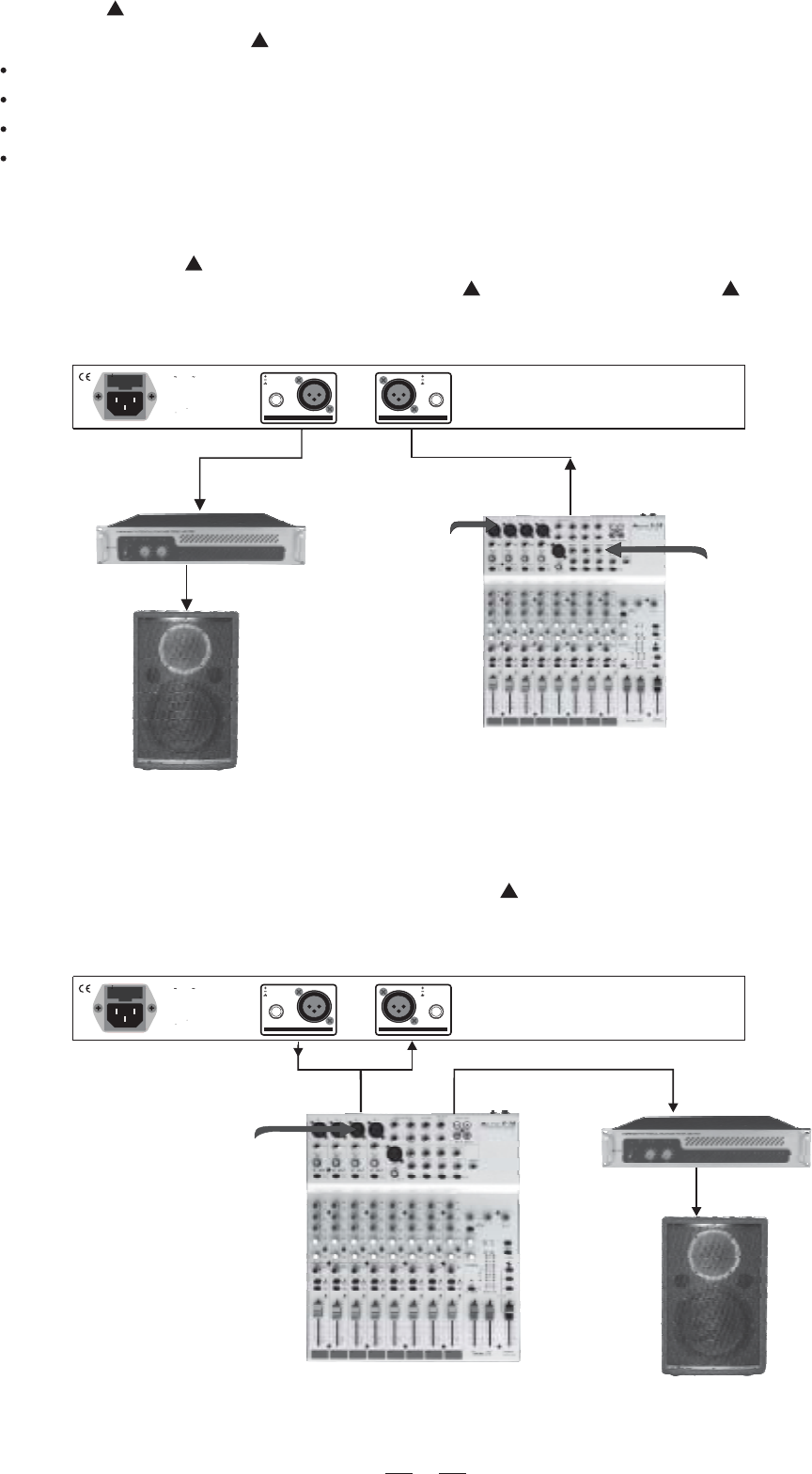
9
5.2 Using your -Q in a sound reinforcement systemLTO
You can successfully use your -Q in a sound reinforcement system in order to:
LTO
Cut out undesirable frequencies such as tape hiss and/or floor rumble.
Create sounds effects enlarging the stereo image.
Eliminate feedback using very sharp Q control on selected frequencies.
Overboost or overattenuate selected frequencies thanks to the overlapping frequency range of the five bands
available.
Follow this chart and you will use the total flexibility of your -Q on the Main Mix.LTO
5.3 Application on single instrument
5.4 Application on main MIX
Stereo Program Source
Insert
Main Output
Main OutputInput
MIC level signal
MIC level signal
If you wish to use your -Q as an "in line" processor and use it for single instrument equalisation, you mustLTO
connect the output of the instrument to the input of your -Q and the output of the -Q to the input ofLTO LTO
an amplifier.
OUTPUT
INPUT
TIP /PIN 2
RING /PIN3
SLEEVE /PIN 1
TIP /PIN 2
RING /PIN3
SLEEVE /PIN 1
110-120V
220-240V
21
3
NEWTIDE
21
3
NEWTIDE
AC INPUT
95-120V /210-240V60-50Hz
Rated Power Consumption 9W
FUSE:
210-240V: T200mAL 250VAC
95-120V: T315mA 250VAC
REPLACE FUSE WITH CORRECT TYPE ONLY
Apparaten skall anslutas till
jordat uttag nar den ansluts
till ett natverk
A101
OUTPUT
INPUT
TIP /PIN 2
RING /PIN3
SLEEVE /PIN 1
TIP /PIN 2
RING /PIN3
SLEEVE /PIN 1
110-120V
220-240V
21
3
NEWTIDE
21
3
NEWTIDE
AC INPUT
95-120V /210-240V60-50Hz
Rated Power Consumption 9W
FUSE:
210-240V: T200mAL 250VAC
95-120V: T315mA 250VAC
REPLACE FUSE WITH CORRECT TYPE ONLY
Apparaten skall anslutas till
jordat uttag nar den ansluts
till ett natverk
A101















